Steph W. from SEOPressor


...help you check your website and tell you exactly how to rank higher?


87
score %
SEO Score

Found us from search engine?
We rank high, you can too.
SEOPressor helps you to optimize your on-page SEO for higher & improved search ranking.
By vivian on July 11, 2019
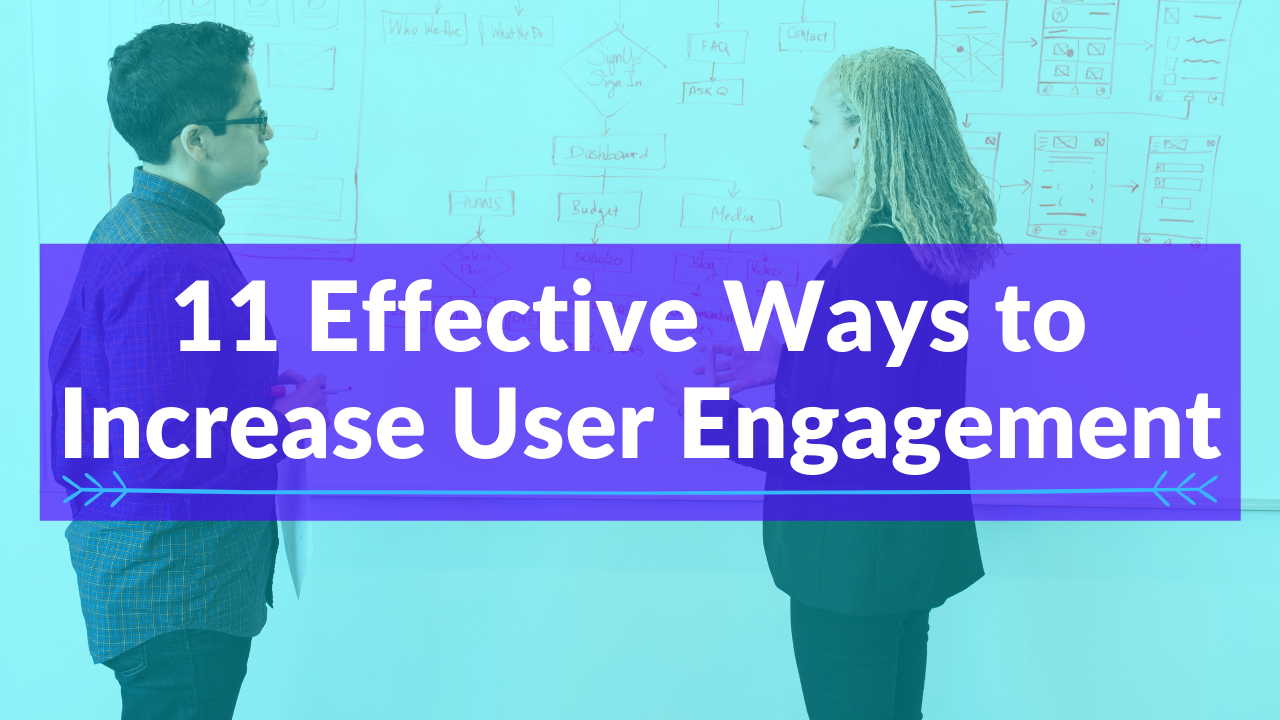
In this blog post, we are going to dive into: what is user engagement, whether user engagement affects search engine optimization, the type of user engagement, metrics to evaluate user engagement and lastly, strategies to increase user engagement. Let us begin!

How can you keep your users engaged on your website?
User engagement is simply the measure of how much the visitor enjoy browsing your website. When visitors enjoy and find value on your website, they stick around and take actions.
In other words, they engage with your website. The engagement of your visitors is highly correlated with user experience. Let me give you an example: When you’re having a good time during an event, you naturally want to stay for a little while longer. It’s as simple as that. I’m sure you can relate.

As user engagement starts increasing, your website ranking will start to increase as well
Yes, the engagements of users do affect SEO, so, read on. How? As we all know, Google’s main priority is to create the perfect experience for users. The extent of users’ engagements tell Google how helpful and relevant your site is.
When user engagement is high, your website ranking will be high too. Towards the end of this article, I will share with you ways you can increase engagement of users on your website.
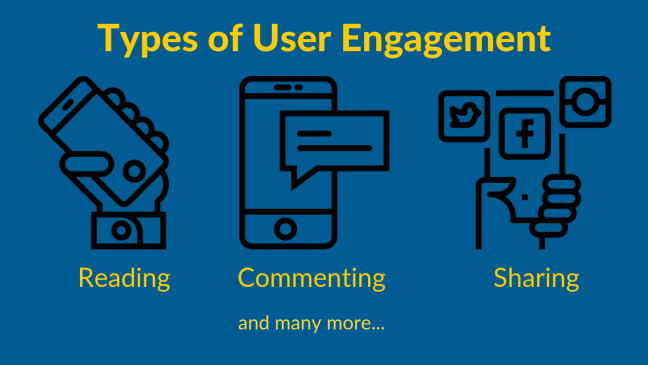
Types of User Engagement
Any actions taken by the visitors on your website is considered as an involvement. It could be just reading and scrolling through your content. Here are some common ones.
Yes. Visitors reading your content is considered an engagement. They are staying and taking actions on your website such as scrolling, clicking on links, enlarging images and watching videos.
This is another common type of visitor engagement. After reading your content, people like to ask questions and express their point of view. If you provide content, always remember to encourage your visitors to leave a comment about what they think and always reply to them!
If users like your content and find value in your website, they will share your website with their friends. That means more users will engage on your website!
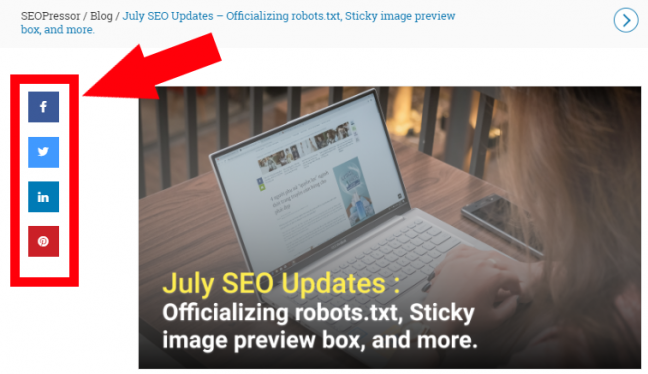
Always make it easy for users to share your website.
It is extremely important to keep an eye on your users’ engagements. Your users’ engagements tell you whether your website is in a good or bad state. But how can you track your visitors’ engagements?
There are several tools you can use to track the engagement of the users. I personally use Google Analytics. to see how my visitors behave on my website.

To see this data, Go to (Google Analytics > Behavior Tag >Overview)
This two metrics tell you whether or not you’re getting the number of page views you deserve. If you think you deserve getting a high page view number but got lower than expected, perhaps you can work on your content and encourage sharing so your content can be seen by more people.
This is a metric that tells you whether or not your visitors are actually reading your content. For instance, you wrote content that needs at least a reading time of 7 minutes.
But, Google Analytics tells you that the average time on page for that content is only 3 minutes. It means that most of them do not engage fully with your content. The longer you can keep your users engage, the better. I’ll share with you ways you can increase user engagement in just a bit.
When visitors visit your website and do not take any actions that trigger a request to the Analytics server and then exit, that is counted as a bounce. If your website requires users to take action and they do not (such as redirecting to next page or other sites), it will result in a high bounce rate.
It is always good to aim for a lower bounce rate.
Next, the percentage of exit metric is calculated by dividing the number of exits by the number of page views for the page or set of pages. It lets you know how many people exit after that page during a session.
The exit rate can be high for your contents as they could be the last page users visit but it is never okay to have a high exit rate on your homepage where it leads people to your content.
Here is an example by GA on how bounce rate and percentage of exit is calculated:
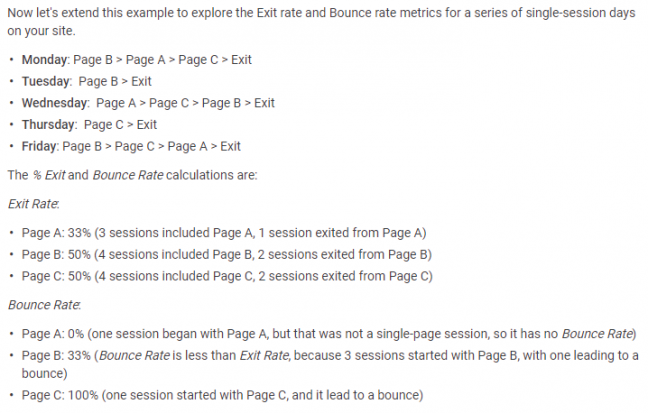
Calculation of Bounce Rate and % Exit
Google Analytics also tells you at which page most of your visitors stop reading too. To get that data, click on the secondary dimension and select “Page Depth”. It will tell you at which page most of your readers stopped reading.

To view Page Depth metric, click on “Secondary Dimension”, select Behavior and find “Page Depth”
Let’s look at the image above. Google Analytics let you know that for each page, how many out of 4,546 people left at that particular page. Identify the pages where most of your users stopped reading.
With that data, perhaps you can improve the content on that page to make it more interesting and maybe create a hook to keep them reading.
Finally, we’re going into strategies to increase the engagement of users.
First thing firsts, the main concern for users will always be the security of your website. It is easy to understand why. Ask yourself this, when visiting the bank to withdraw money, would you visit one with security guards or one with no security guard at all?
Of course, you’ll pick the one with security guards if you have a choice. So, what has this got to do with switching to HTTPS, you asked?
HTTP stands for Hypertext Transfer Protocol. The HTTP in HTTPS is the same, the additional S stands for Secure. HTTPS is the combination of HTTP and Secure Socket Layer(SSL).
So, switching to HTTPS lets users know that your website is secure. They will stay on your website and explore freely, not having to worry about anything.
If your website is using HTTP, Google will show that your website is not secure and warn users to not key in important and sensitive data like password and credit cards on your website. Hence, if you’re running an e-commerce store, it is very likely that you will not be getting conversions.
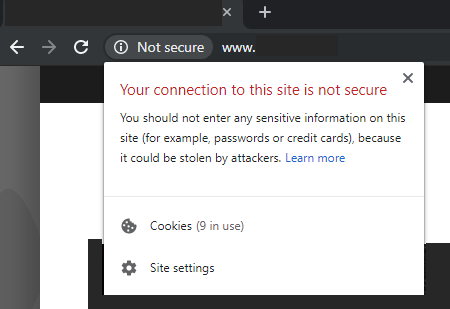
Would you still enter your passwords or credit cards information if you see this notice?
I’m a 100% sure I wouldn’t key in any information if I see that a website isn’t secure. Not sure about you but most of the time I would leave the website and look for a secure website.
On a side note, if you want another reason to switch to HTTPS, here you go:
Google uses HTTPS as a ranking signal for your website. Read more here.


The first impression is very important to the website. It’s the same in real life. The first impression is the mental image formed in one’s mind when they first encounter an event. The first impression usually stays with the individual for a very long time.
Imagine you’re going on a date with a person for the first time. You will spend hours perfecting your appearance. And you know what happens when you don’t dress up… Most likely, you won’t hear from your date again.
Do the same with your website. It doesn’t need to be perfect but you can make it pleasant to see. If your website is well-organized, it makes things easier for your visitors and shows your visitors that you put in a lot of effort (which equals to quality).
Just like what people do in real life after the first date, be it a good or bad date, people always tell their friends how it went. How do you want your visitors to describe your website?

When users enjoy their experience on your website, they do not mind spending more time on it and vice versa.
User experience is what comes after first impression. User experience is an extremely important factor to focus on when it comes to engagement.
When users have a good experience with your website, they will spend a long time on your website and revisit. On the other hand, if they’ve had a bad experience, they will leave the website quickly and will not revisit anymore.
To create a good user experience, ensure that your website loading speed is quick. It is no secret that users get frustrated and annoyed if a website takes too long to load. Next, you need to ensure that your website is working smooth, with no errors.
Users visit your website for a reason. When they make a search on search engine and your website appears, they assume you have exactly the thing they’re looking for (or at least something relevant). Make sure your content matches the title of your article.
When writing your content, always aim to help your visitors with their goal. Make it informative and easy to read. Also, optimize your content using SEO tools. SEO tools assist you in creating good content and help you write for your users.
How? SEO tools tell you whether or not your content is readable, reminds you to include keywords in the title and whether or not the image-to-text ratio is good enough. These are only a few ways of how SEO tools help you.
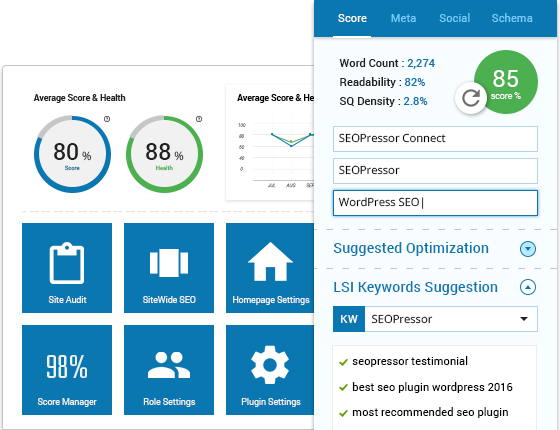
SEOPressor Connect guides you to create the “close-to-perfect” content.
We, humans, are different in many ways. We have different learning abilities. Some of us may appreciate the information in a text form, while some of us may appreciate the information in visual form and audio form.
There are people who will leave a site immediately when they see that the site is just a dull boring page. Integrate them to make things interesting and helpful for your readers.
Good internal linking encourages your user to explore around the website for a long time, one page to another.
It is extremely important to check for broken links. When you provide links, you are usually providing extra information for your visitors to explore if they’re interested.
Do you think your visitors will be satisfied if they click on a link, hoping to get information, but landed on an error page? It makes them think that your website is not updated and it also drives them away, as they need to visit another website for that information.
In order to prevent this, always check if your links are working. No, you don’t have to do it manually. There are tools available that help you detect broken links.
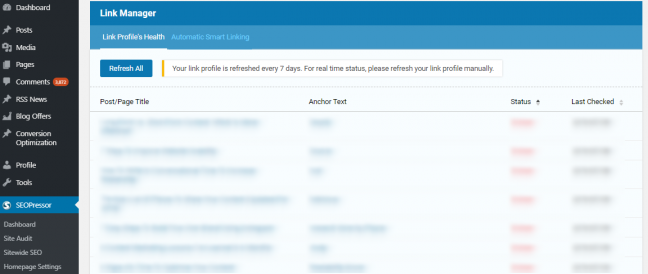
SEOPressor’s Link Manager helps you detect broken links on your sites.

Another way to increase engagement is to provide support on your website. There can be times when visitors don’t understand certain things, unable to locate information and face an issue with the website. The support can be in the form of live support where there is someone who is available to reply instantly or a robot.
Instead of leaving the website, visitors can rely on support now. If the robot is unable to help, the chatbot may help visitors to connect with live support. Having an assistant on your website is always a good idea but ensure that it functions well and does not disrupt the visitors.
The purpose of social media is for you to connect with people as well as reach more people. People can reply freely and share their thoughts on social media. Always reply to your audiences. Take my case as an example.
I followed people who have the same interest as me, which is digital marketing, on social media. It is to ensure that my posts are relevant to my followers. A few days ago, I’ve published an article on “9 Fast & Easy Ways to Increase Google Ranking“.
Social media has given me an opportunity to engage with people. One of my followers commented and gave me his thoughts about our blog post and content. We have used his feedback to improve user experience on our website, which as a result, increase user engagement on our website.
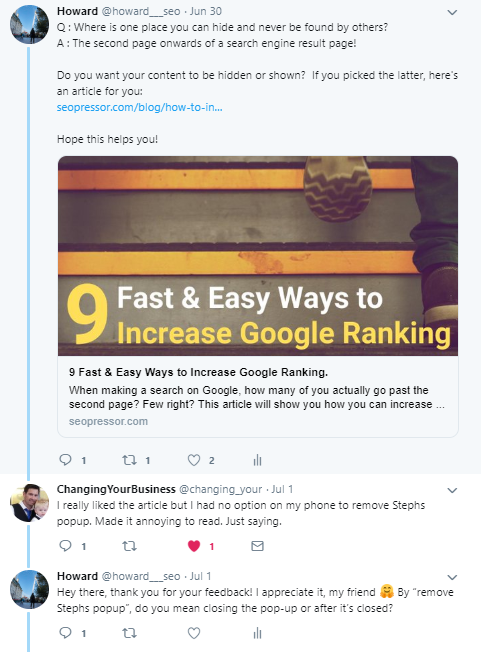
Social media gives you the opportunity to engage with your audiences.
Sometimes you need to encourage engagement to get engagements. Instead of your visitors just passively scrolling through your website until the end, you can ask them to drop a comment about what they think.
Towards the end, you can simply ask them a question as well. Getting feedbacks alone is not enough; always remember to reply to your visitors. That will make them want to participate with your website more in the future.
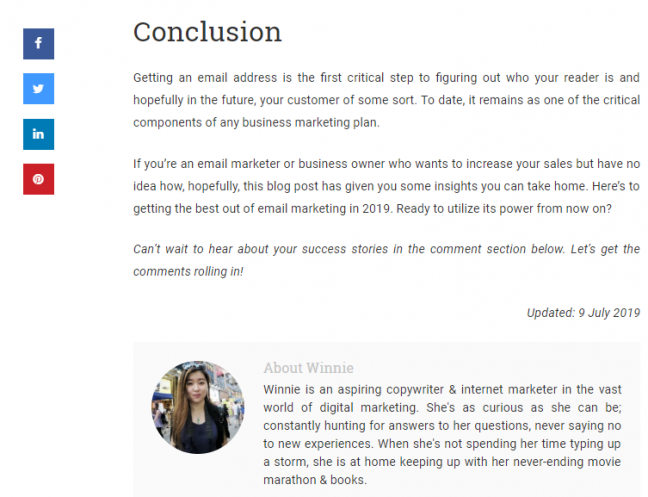
If you notice, most of our blog posts encourage readers to leave a comment. We are always open to feedback and discussion with our fellow readers.
Ensure that your website works well on mobile. For instance, make sure your page fits the screen of the phone and as mobile phones have a smaller screen, make your website easier to see and navigate. You can check whether or not your website is mobile-friendly here: Mobile-Friendly Test
Mobile-friendliness is so important that Google introduced Mobile-First Indexing. They now index websites based on what the websites show users on mobile.
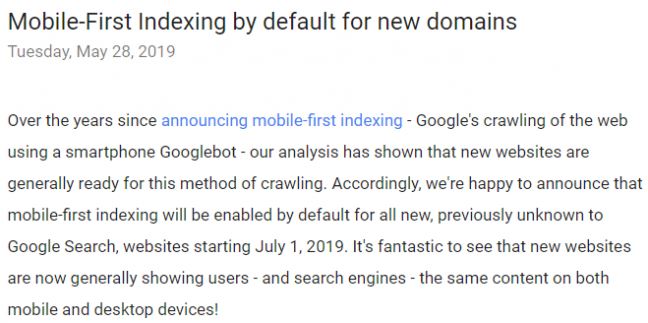
Google will start crawling the web with a smartphone Googlebot.
According to Statista, it is estimated that there will be 6.8 billion mobile users worldwide in 2019 and it is also expected to increase over the years. More and more people are searching the web for answers on their mobile phone.
These give website owners enough reason to ensure their website is mobile-friendly.
Last but not least, to increase user engagement, you need to always track your data. The metrics are as mentioned above. By keeping an eye on your users’ behavior, it tells you whether you are doing things correctly or not.
All the data provided on GA are opportunities for you to improve your website. It is free to use so take advantage of it while you can!

Always monitor your users’ behavior. It tells you a lot about your website.
To keep your visitors engaged actually isn’t that hard. All you need to do is create an “environment” for your users where they’ll enjoy spending their time.
That’s it for now. What’s next? It’s time for you to implement the 10 ways that I’ve mentioned above!
Do you happen to know any other ways of increasing user engagement? If you do, feel free to share with me and fellow readers in the comment section below!
Updated: 9 December 2025


Save thousands of dollars (it’s 100x cheaper)

Zero risk of Google penalty (it’s Google-approved)

Boost your rankings (proven by case studies)
Rank High With This Link Strategy
Precise, Simplified, Fast Internal Linking.
